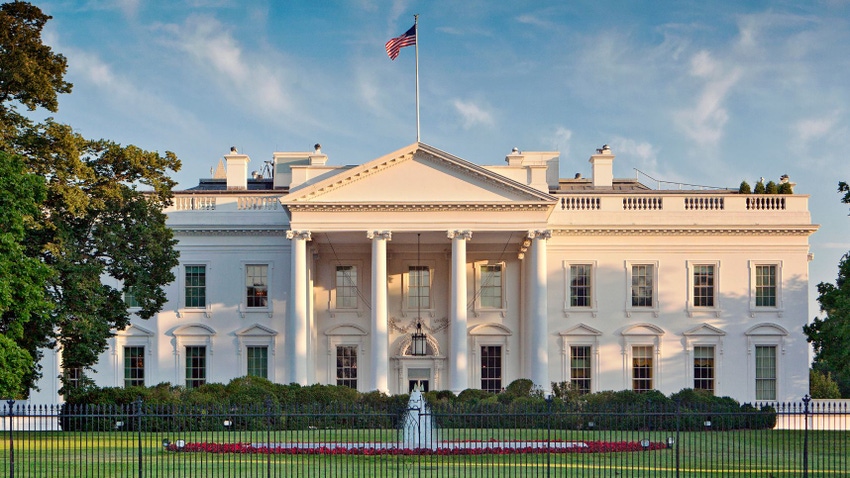
Here are this week's most-read stories on AI Business:
White House Unveils Guidelines for Safe, Secure, Responsible AI Use
Federal agencies must adhere to new standards when it comes to protecting rights and safety when it comes to artificial intelligence.
As announced by Vice President Kamala Harris, federal agencies are required to promote the safe, secure and responsible use of AI. These standards deliver on the inaugural government-wide policy from the White House Office of Management and Budget, aimed at mitigating AI risks while maximizing its benefits.
The announcement builds on Harris’ November presentation at the AI Safety Summit in London where she laid out a vision for how AI will be used in the future to advance public interest and is a core component of President Biden’s landmark AI Executive Order.
The first of the three new standards focuses on protecting rights and safety. Government agencies will now be required to verify any AI tools they use don’t endanger citizens’ rights and safety.
“I’ll give you an example,” Harris told reporters in a press call. “If the Veterans Administration wants to use AI in VA hospitals to help doctors diagnose patients, they would first have to demonstrate that AI does not produce racially biased diagnoses.”
Transparency is the focus of the second requirement, ensuring everyone has the right to know when and how the government is using AI and that it’s being used responsibly.
“And we want to do it in a way that holds leaders accountable for the responsible use of AI. Transparency often, and we believe, should facilitate accountability,” Harris said.
Read more about the new requirements for federal agencies.
US, UK Form Historic Alliance on AI Safety, Testing
The U.S. and U.K. have pledged to jointly develop tests to evaluate the safety of AI systems in a first-of-its-kind bilateral agreement
U.S. Commerce Secretary Gina Raimondo and U.K. Technology Secretary Michelle Donelan signed a Memorandum of Understanding to facilitate the exchange of information and technical knowledge regarding AI model risks and associated security measures between both nations.
The announcement follows the launch of new requirements for U.S. federal agencies on the responsible use of AI.
Under the agreement, AI Safety Institutes from both nations will work together to create safety testing measures.
“This partnership is going to accelerate both of our Institutes’ work across the full spectrum of risks, whether to our national security or to our broader society,” Raimondo said. “Our partnership makes clear that we aren’t running away from these concerns – we’re running at them. Because of our collaboration, our Institutes will gain a better understanding of AI systems, conduct more robust evaluations and issue more rigorous guidance.”
Learn more about the U.S., U.K. agreement.
AI Protections Secured for Animation Voice Actors
Voice actors working on animated shows are now protected if their voices are used to create digital replicas.
SAG-AFTRA members struck a deal with the Alliance of Motion Picture and Television Producers (AMPTP), voting overwhelmingly in favor of the three-year contract in a 95.52% to 4.48% vote.
Among the terms, the contract “acknowledges the importance” of human voice acting and stipulates that voice actors should only refer to humans.
Voice actors will receive compensation if a synthetic voice is created using their performances for a recognizable character.
Digital replicas could be compensated even if they don't sound like the original voice actor, “as long as it can be shown that the digital replica was made using the voice actor’s voice,” according to the contract. Previously, digital replicas had to sound like the actor.
Read more about the terms of the contract.
Amazon Invests $4B to Advance Generative AI Tech to Customers
Amazon has increased its investment in Anthropic, adding another $2.75 billion to strengthen ties with the large language model development company.
Amazon took a minority share in the startup last September and has now added to its initial $1.25 billion investment, bringing its total investment in the AI startup to $4 billion.
“We have a notable history with Anthropic, together helping organizations of all sizes around the world to deploy advanced generative artificial intelligence applications across their organizations,” said Swami Sivasubramanian, vice president of data and AI at AWS.
“Generative AI is poised to be the most transformational technology of our time, and we believe our strategic collaboration with Anthropic will further improve our customers’ experiences, and look forward to what’s next.”
Amazon describes its Anthropic ties as a “strategic collaboration” — a description similar to how Microsoft bills its partnership with rival OpenAI.
Anthropic uses AWS as its main cloud provider in return for providing exclusive access to their models. Anthropic is also using Amazon hardware to train its AI models instead of industry-standard chips from Nvidia.
Uncover more about Amazon’s latest AI investment.
Quantum-Powered Machine Learning Spots Pneumonia in Chest X-Rays
Researchers have combined quantum-inspired computing methods with machine learning to better diagnose pneumonia from chest X-ray images.
Pneumonia is an infection in the lungs that can cause a cough, difficulty breathing, a high temperature and chest pain, with severe cases needing hospital treatment.
It is most commonly diagnosed by radiologists who examine X-rays looking for white spots on the lungs called infiltrates that indicate an infection.
However, long backlogs and workforce shortages mean that getting a diagnosis early enough for treatment to have the greatest chance of success can be challenging. According to the World Health Organization, pneumonia accounts for 14% of deaths in children younger than five years old.
A team led by Carnegie Mellon University professor Sridhar Tayur has published a paper detailing a study that shows that applying quantum computing techniques to machine learning can detect pneumonia in X-rays quickly and accurately.
About the Author(s)
You May Also Like


.jpg?width=700&auto=webp&quality=80&disable=upscale)
.jpg?width=700&auto=webp&quality=80&disable=upscale)
.jpg?width=700&auto=webp&quality=80&disable=upscale)
.jpg?width=300&auto=webp&quality=80&disable=upscale)
.jpg?width=300&auto=webp&quality=80&disable=upscale)
.jpg?width=300&auto=webp&quality=80&disable=upscale)
.jpg?width=300&auto=webp&quality=80&disable=upscale)
.jpg?width=300&auto=webp&quality=80&disable=upscale)